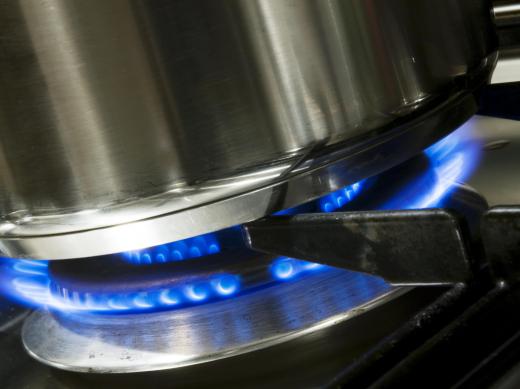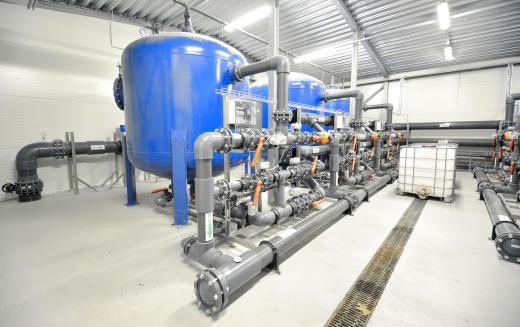A pressure relief valve (PRV) is a safety device which is designed to divert pressure in the event that a pressurized system of some kind encounters a problem which leads to a dangerous rise in pressure. One classic example of a this type of valve is the valve mounted on a hot water heater which “bleeds” if the temperature or water pressure inside becomes too high, preventing a catastrophic failure of the water heater. Pressure relief valves are extremely useful, and required by law for safety reasons in many regions.
The idea behind a pressure relief valve is that it provides an outlet for dangerous buildups of pressure. Pressurized gases and liquids can both be regulated with the assistance of this type of valve. In the event that pressure in the system becomes too high, instead of blowing out the entire system, the pressurized liquid or gas will vent from the pressure relief valve, bringing the pressure back down and preventing a serious incident.

Pressurized systems are used to move various liquids and gases around, with the force of the pressure pushing the substance through a series of pipes. In a home, for example, the pressure in the system is what allows water to flow when a tap is opened; if pressure is lost, nothing will come out of the tap. However, if the pressure is high enough, it could potentially cause an explosion, unless a safety valve is in place. High pressure can also damage devices connected to the system, or it may cause unexpected outcomes, such as a burst of flame from a gas stove when it is lit, or unusually high water pressure from a tap which could surprise a user.

Pressure relief valves can be set to open at a specific pressure or temperature. They are often situated in the open air, to prevent damage from leaks and spills. Many systems have a failsafe in place, so that when the valve opens, the system also turns off or otherwise alerts the user to a problem.
In the case of a hot water heater, the valve is actually a temperature pressure relief valve (TPRV or TPR valve). These valves are calibrated to open and release water when either the temperature or the pressure gets too high, and they can be tested by lifting the small lever on the front of the valve to see if water flows out. Regular testing is strongly recommended, as an exploding hot water heater can do a significant amount of damage, easily blowing through beams and supporting walls.
Ever since she began contributing to the site several years ago, Mary has embraced the exciting challenge of being a About Mechanics researcher and writer. Mary has a liberal arts degree from Goddard College and spends her free time reading, cooking, and exploring the great outdoors.

